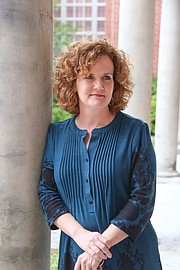We can do more to end homelessness, says Rev. Jill Buckley of Stewpot, through working together and having more partners at the table. Photo by Nick Fewings on Unsplash
I read with great interest Aliyah Veal's recent article, "Collaboration Key to Ending Homelessness?" I think her question is on target: Research does, in fact, prove that collaboration is the key to ending homelessness. However, more collaborative work is happening in our community than made it into her article.
Stewpot participates in a collaborative of more than 35 agencies and advocates whose primary goal is to end homelessness in our area. This group, the Central MS-500 CoC, uses a model called Housing First, which houses a person or family experiencing homelessness using a combination of short-term financial assistance and a tailored array of supports to help them stay there long-term.
The CoC is also responsible for organizing the Point-in-Time count that Veal references. The PIT count's main purpose is to take a snapshot of an area's homeless population. It tells us how many people are homeless on any given night in our community, sheltered and unsheltered. From this information, we extrapolate how much permanent housing is needed to ensure that every person who is sleeping in a shelter or in a place not meant for human habitation. This is important for strategic planning.
Of course, the limits of this kind of counting are obvious. As Talla White pointed out in Veal's article, the PIT count does not tell us how many people are doubled up with family or friends or living in hotels, and it doesn't include those who live "off the grid" or evade counting efforts.
That's one reason the group who organized the PIT count this year has started working with Outreach Workers from the Veterans Administration, Grace House, Mississippi United to End Homelessness and Catholic Charities to map out known encampments and coordinate efforts at reaching the people living there. We recognize the need for ongoing contact, if for no other reason than developing trust. Not every person experiencing homelessness is ready to be housed at first ask. Once they are, we want them to know who can help them and how.
Veal mentioned White's suggestion that the City use Charity Tracker. All homeless programs that receive HUD funding are required to use a database called the Homeless Management Information System, or HMIS. At present, 14 agencies in our CoC are using HMIS. It is not a perfect system, but it does help us track (and share information on) the services accessed by individuals and families experiencing homelessness. It also stores information gathered by the VI-SPDAT interview tool, which helps us determine which persons or families experiencing homelessness are the most vulnerable and for whom help needs to be prioritized. From this list, agencies coordinate resources for people, ensuring that those most in need don't end up in a system of endless referrals but little help.
In the past year, the Central MS-500 CoC has joined the Built for Zero, or BFZ, movement, also referenced in Veal's article. (BFZ is the program that helped Open Doors Homeless Coalition on the Gulf Coast reach their goal of housing all homeless veterans.) BFZ drills down on the data gathered in the HMIS system and helps us develop strategies to address obstacles to getting people housed. But it also connects us to our peers in other states, so we can share ideas, celebrate breakthroughs and learn from one another's insights and mistakes. Currently, we are connected to CoCs in Santa Fe, N.M., and Anchorage, Alaska.
Many of these efforts fly under the radar. For example, over the past 12 months, Stewpot has helped 86 households experiencing homelessness to find permanent housing through our Rapid Rehousing grant that HUD funds. Through its CHOICE grant from the Department of Mental Health, MUTEH has provided housing to 44 people living in the Jackson area who were experiencing homelessness and who also have a severe mental illness. Grace House has helped 38 people experiencing homelessness and living with HIV/AIDS to find and keep stable housing and another 102 people who are homeless and have a chemical dependency. Altogether, that is a pretty deep impact, and this is only a partial listing.
Are these efforts perfect? No. There is much room for improvement, but the CoC has a growth mindset.
Do we want to do more? Yes! But we need more partners at the table. Colin Groth was the government relations director at the Southwest Ohio Regional Transit Authority when he was invited to a meeting for Strive Together, Cincinnati's home-grown effort to make sure every child in their city succeeds "from cradle to career." At first not sure how he could help, he eventually helped organize city buses to transport children to summer camps. As he related at the last BFZ Learning Session in Atlanta, he did not know how he could be part of the solution until he came to the table. You or your organization could be part of helping to end homelessness in the Jackson metro area. But we need you at the table. As with all ambitious endeavors, we will accomplish more together than apart.
Rev. Jill Barnes Buckley is the executive director of Stewpot Community Services.




Comments
Use the comment form below to begin a discussion about this content.
comments powered by Disqus